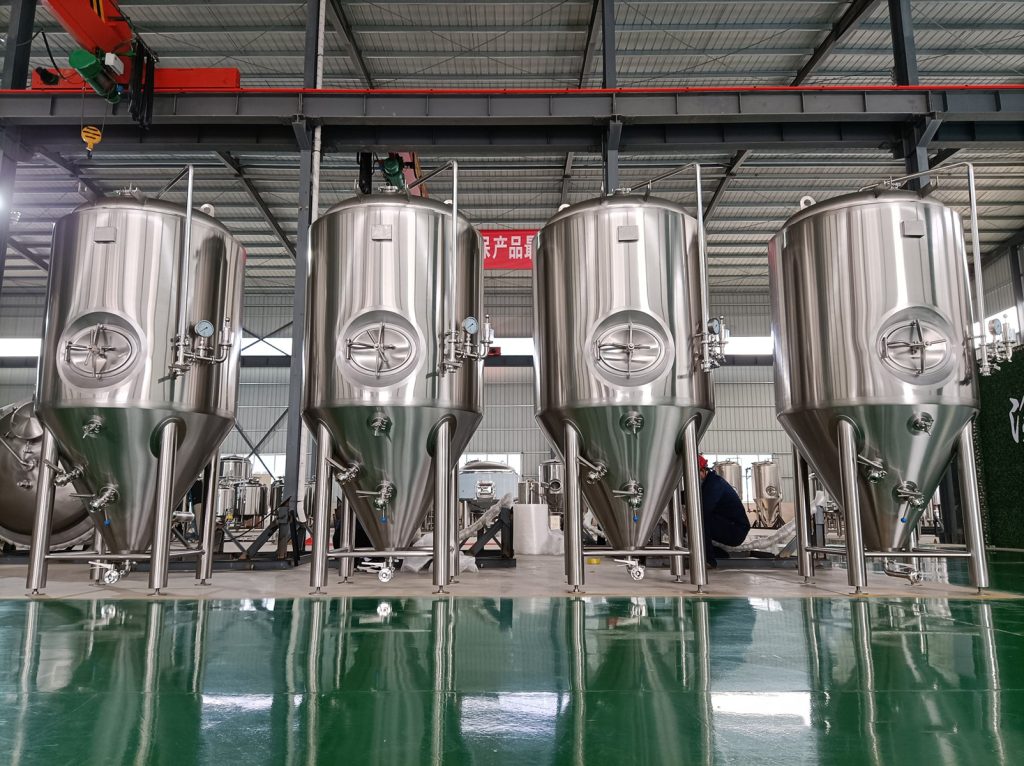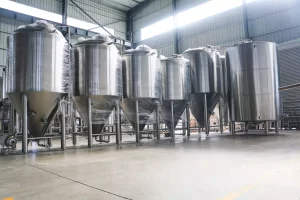How to Calculate the Floor Space Needed for Your Brewery Setup?

Starting up a brewery can be an exciting venture, but it requires careful planning, especially when it comes to determining the floor space you’ll need for your brewery setup. Whether you’re opening a small craft brewery or a larger commercial operation, understanding how much space you need is crucial for efficient workflow, safety, and future growth. In this article, we will guide you through the process of calculating the floor space necessary to run a successful brewery.
1. Understand the Different Areas of Your Brewery
Before diving into the specifics of floor space calculations, it’s important to identify the different areas of your brewery setup. Each area will require a certain amount of space, and it’s essential to factor in each one:
A. Brewing Area
The brewing area is where the magic happens – this is where you’ll be boiling, fermenting, and conditioning your beer. The space required here will depend on the size of your brewing system. A standard brewing system typically includes:
- Mash tun
- Lauter tun
- Boil kettle
- Fermentation tanks
You’ll need ample space to accommodate the equipment and allow for easy movement and cleaning. Typically, a 5-barrel system requires at least 400 square feet, but larger systems will require more space.
B. Fermentation Area
Fermentation is one of the most critical parts of brewing beer, and it requires both temperature control and enough space for your fermenters. Depending on your production volume, you might need multiple fermenters, each requiring a significant amount of space. Don’t forget to plan for future growth and scalability.
C. Packaging Area
Once your beer has fermented, it needs to be packaged, whether in bottles, cans, or kegs. The packaging area includes space for labeling, bottling, and storing the final product. Depending on your production capacity, the packaging area can range from a small corner to a dedicated room.
D. Storage and Cellar
Proper storage for raw materials like hops, barley, and yeast, as well as finished goods, is essential. You’ll also need space for refrigerated storage to keep ingredients fresh and for aging beer if you plan to make barrel-aged brews. Cellars for aging require extra floor space for barrels and storage racks.
E. Office and Administrative Area
In addition to the production space, you’ll need a small area for administrative tasks. This could include an office for bookkeeping, planning, and managing operations.
2. Estimate the Floor Space Based on Your Production Scale
The amount of floor space needed depends largely on the scale of your brewing operation. For small breweries, a 1,000 to 2,000-square-foot space may be sufficient, but for larger breweries, you may need 10,000 square feet or more. Here’s a basic guide:
- Small Brewery (5–20 barrels per batch): Approximately 1,500 to 2,500 square feet.
- Medium Brewery (20–50 barrels per batch): Around 3,000 to 5,000 square feet.
- Large Brewery (50+ barrels per batch): Can require 10,000 square feet or more.
It’s important to plan for future expansion as well, especially if you anticipate growth after starting up a brewery.
3. Account for Workflow and Efficiency
Efficiency is key to any successful brewery. When planning your brewery layout, make sure to allow for smooth workflow between different areas. This includes:
- Space for workers to move between the brewing, fermentation, packaging, and storage areas without crowding.
- Proper placement of equipment to minimize transportation time for materials.
- Adequate space for cleaning and sanitizing.
A well-planned layout will reduce operational delays and improve safety, ultimately helping you run a more efficient business.
4. Factor in Equipment and Other Considerations
Don’t forget to consider the size of your brewing equipment when calculating floor space. Larger brewing systems, such as automated systems, will require more room for installation, maintenance, and safety.
Additionally, you’ll need to account for utility space (electrical, plumbing, etc.), ventilation systems, and proper waste disposal areas. Each of these factors adds to the overall space needed for your brewery setup.
5. Plan for Future Growth
As you start up a brewery, you may not immediately need a massive floor plan, but it’s important to think ahead. Over time, your brewery will grow, and your production capacity may increase. It’s better to plan for future expansion from the beginning rather than having to relocate or make costly renovations later on.
Leave some room for future fermenters, larger brewing vessels, and additional storage. A flexible floor plan will ensure that you can scale your business smoothly as your operations grow.
Conclusion
Starting up a brewery is a complex process that involves careful planning, especially when it comes to calculating the floor space for your setup. By understanding the different areas of your brewery and estimating the space based on production scale, workflow, equipment, and future growth, you can ensure that your brewery will operate efficiently and safely.
Taking the time to accurately calculate the necessary floor space will set your brewery up for long-term success and make it easier to adjust as your business grows. Remember, the floor space for your brewery is not just about fitting everything in – it’s about creating an environment that fosters productivity and ensures the quality of your product.
By keeping these tips in mind as you plan your brewery setup, you’ll be on the right track to starting up a brewery that’s ready for success.

https://www.tcbrewbeer.com/en/two-vessel-brewhouse-4000l/
https://www.tcbrewbeer.com/en/four-vessel-brewhouse-5000l/
Related recommendations
Turnkey Brewing Systems: The Ultimate Guide for Aspiring Brewers
332Discover how Turnkey Brewing System simplify the brewing process and ensure professional results.
View detailsHow to Reduce Brewing Costs Without Compromising Quality
160Discover how Tonsen’s stainless steel brew equipment reduces brewing costs while maintaining high-quality beer. Efficient, durable, and cost-effective solutions.
View detailsStarting a Brewery Business Plan: Your Ultimate Guide to Crafting Success
198Starting a brewery business plan
View details
 Shandong Tonsenbrew Co., Ltd.
Shandong Tonsenbrew Co., Ltd.




HelloPlease log in